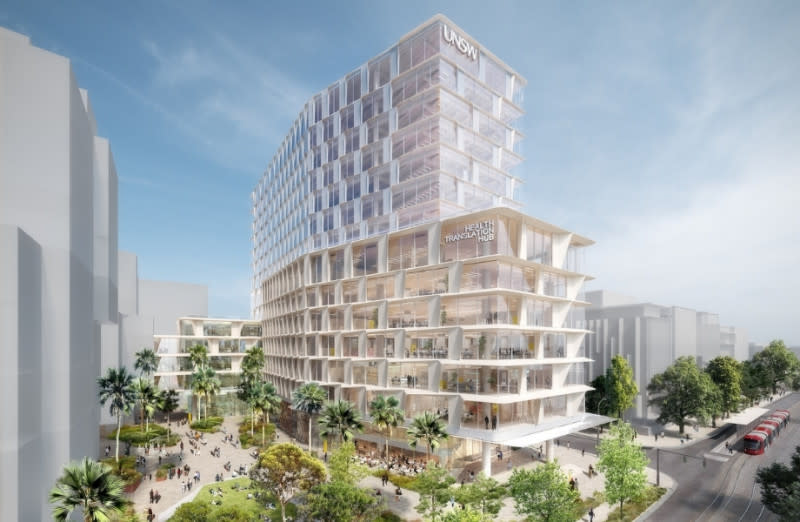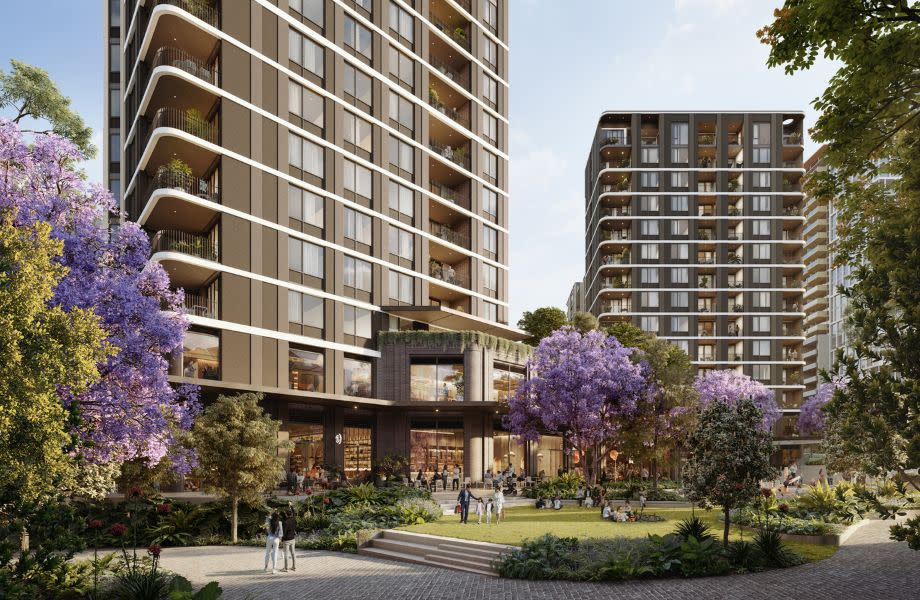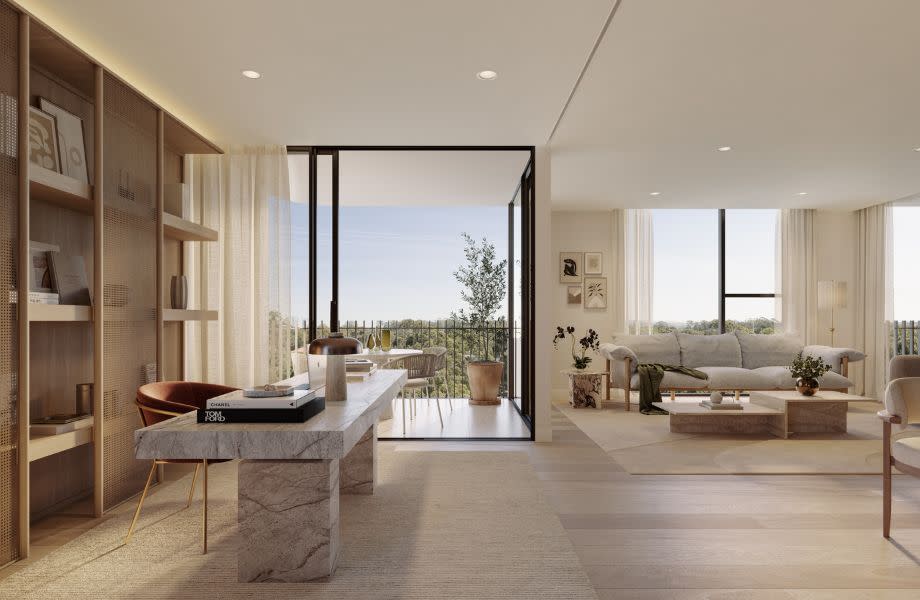Resources
Newsletter
Stay up to date and with the latest news, projects, deals and features.
Subscribe
The $600-million UNSW Health Translation Hub, a key project in Sydney’s Randwick Health and Innovation Precinct, has topped out.
Developed by Plenary in partnership with UNSW Sydney, the 35,000 sq m facility is set to be a leading hub for health and life sciences innovation in the state’s eastern suburbs.
NSW health minister Ryan Park, UNSW vice-chancellor Professor Attila Brungs and Plenary chair Paul Oppenheim recently attended the topping-out ceremony—an industry tradition celebrating the completion of a building’s highest structural point.
The event underscored progress on the facility, which aims to
The hub will house researchers, clinicians, educators and industry experts under one roof to drive health innovation in the precinct.
“This project will strengthen relationships between UNSW, local hospitals, research institutes, and health partners across the Randwick campus, building on over 60 years of teaching hospital affiliations,” NSW health minister Ryan Park said at a topping out ceremony.
The UNSW Health Translation Hub will connect to the nearby Prince of Wales Hospital Acute Services Building and UNSW’s Kensington campus, as well as the upcoming Minderoo Children’s Comprehensive Cancer Centre expected to open next year.

According to Health Infrastructure NSW, the precinct received substantial government investment, including $869.8 million for the Prince of Wales Hospital Acute Services Building and an additional $658 million for the Sydney Children’s Hospital currently under way.
Plenary, funded in partnership with property investment firm ISPT and superannuation funds HESTA and UniSuper, fully financed the Hub.
UNSW will occupy two-thirds of the facility to focus on teaching, research and community initiatives.
“The UNSW Health Translation Hub will transform basic science and discoveries into therapies, treatments and cures, delivered directly to patients,” UNSW vice-chancellor Professor Attila Brungs said.
“Through our collaboration with government, industry and leading academia, we will take new approaches to society’s health challenges and deliver new models of care to improve lives.”

Meanwhile, developer Toga has started construction on Macquarie Rise, a $400-million mixed-use development in Sydney’s northern corridor.
The project at 122 Herring Road in Macquarie Park, 15km from Sydney’s CBD, will deliver 268 premium apartments across three towers, along with commercial and retail spaces in a two-storey podium.
The development has already attracted significant interest, with Toga reporting more than 100 apartments selling off-plan before construction began.
It forms part of Macquarie Park’s evolution from a business and technology hub into a fast-growing residential precinct with convenient metro links and proximity to key amenities.
According to Toga, Macquarie Rise was designed to offer residents a “hotel-inspired lifestyle” with amenities that include a 20m lap pool, Pilates studio, gym, cinema room and designated workspaces.

The site is 500m from Macquarie University, Macquarie Centre and the Macquarie University Metro Station.
“The early sales success of Macquarie demonstrates the growing appetite for flexible, high-quality apartment living in Sydney’s wider city centres,” Toga managing director Allan Vidor said.
Toga’s in-house construction team will lead the build, with completion expected in 2027.
Macquarie Rise will form part of a wider transformation of the suburb—Toga has already delivered nearly 1000 apartments in the area with projects including One Twenty Macquarie and Macquarie Central.